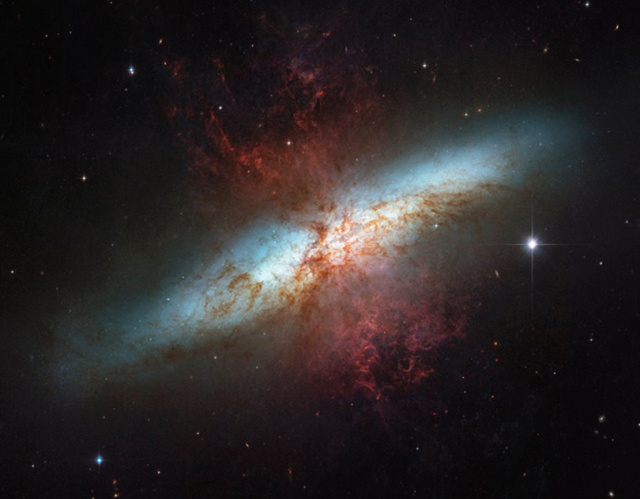This Star Just Went Supernova in a Nearby Galaxy
2014.01.26
A star just went supernova, but that actually means, it happened some 11.4 million years ago, and we're only seeing it right now. Steve Fossey just detected this bright and rare Type Ia supernova using a 'modest telescope in an unlikely spot: foggy north London.'
A Type Ia supernova is a former binary system "in which one of the stars is a white dwarf while the other can vary from a giant star to even a smaller white dwarf."
Fossey says he was showing the galaxy to his students when he noticed that "it kind of looked odd." And then realized it just went supernova.

A Type Ia supernova is a former binary system "in which one of the stars is a white dwarf while the other can vary from a giant star to even a smaller white dwarf."
Fossey says he was showing the galaxy to his students when he noticed that "it kind of looked odd." And then realized it just went supernova.
It is also a rare and up-close look at a type Ia supernova, which seem to explode with a predictable brightness, suggesting a common origin. The 1987 supernova was in a different category, type II — explosions thought to result from the collapsing cores of giant stars. A type Ia supernova is thought to form when stellar material piles onto a white dwarf — an old dim star that has already shed excess mass — and passes a critical threshold, igniting a thermonuclear explosion.
Here's a Hubble view of M82:
More Articles
Copyright © Fooyoh.com All rights reserved.